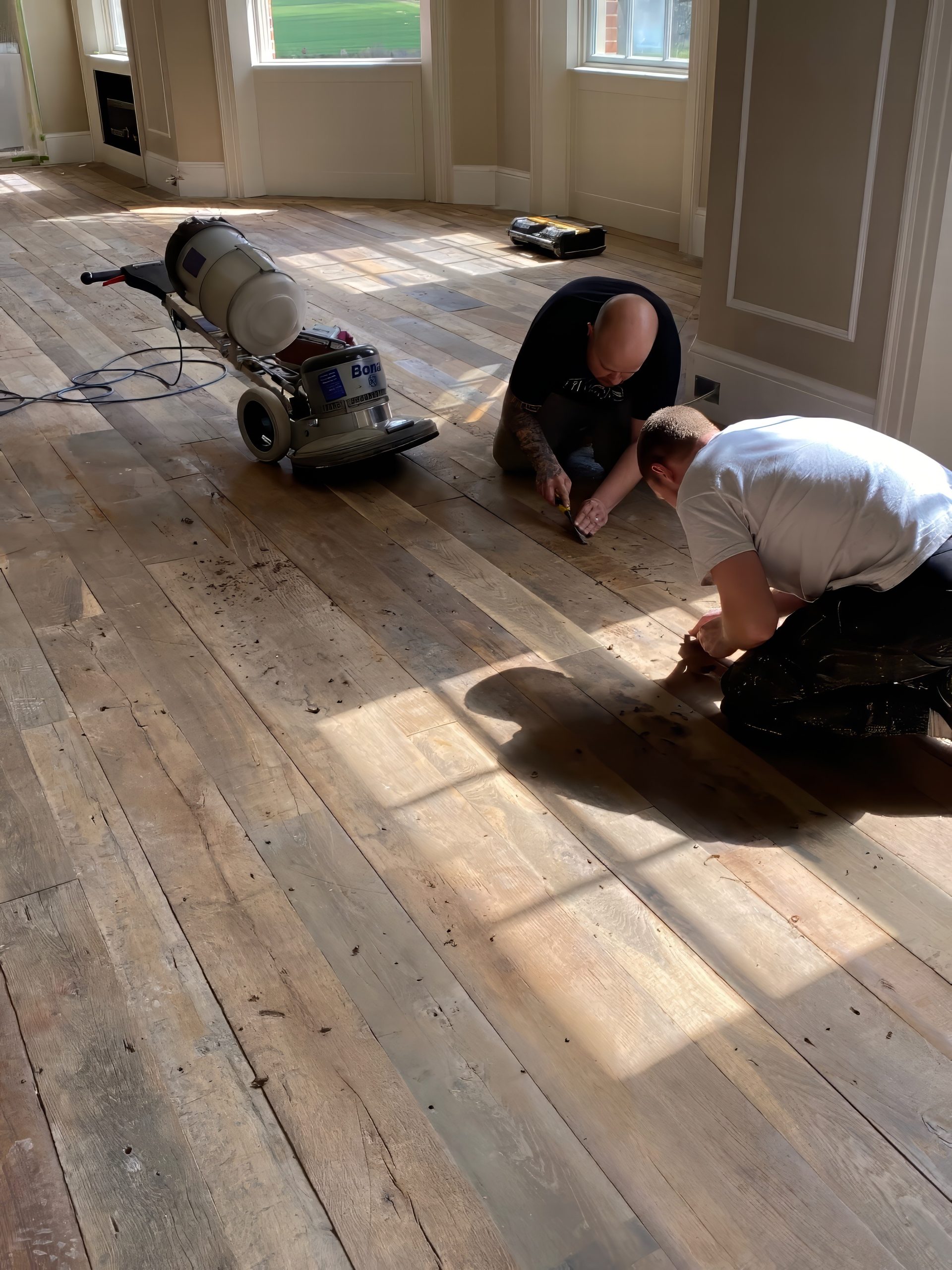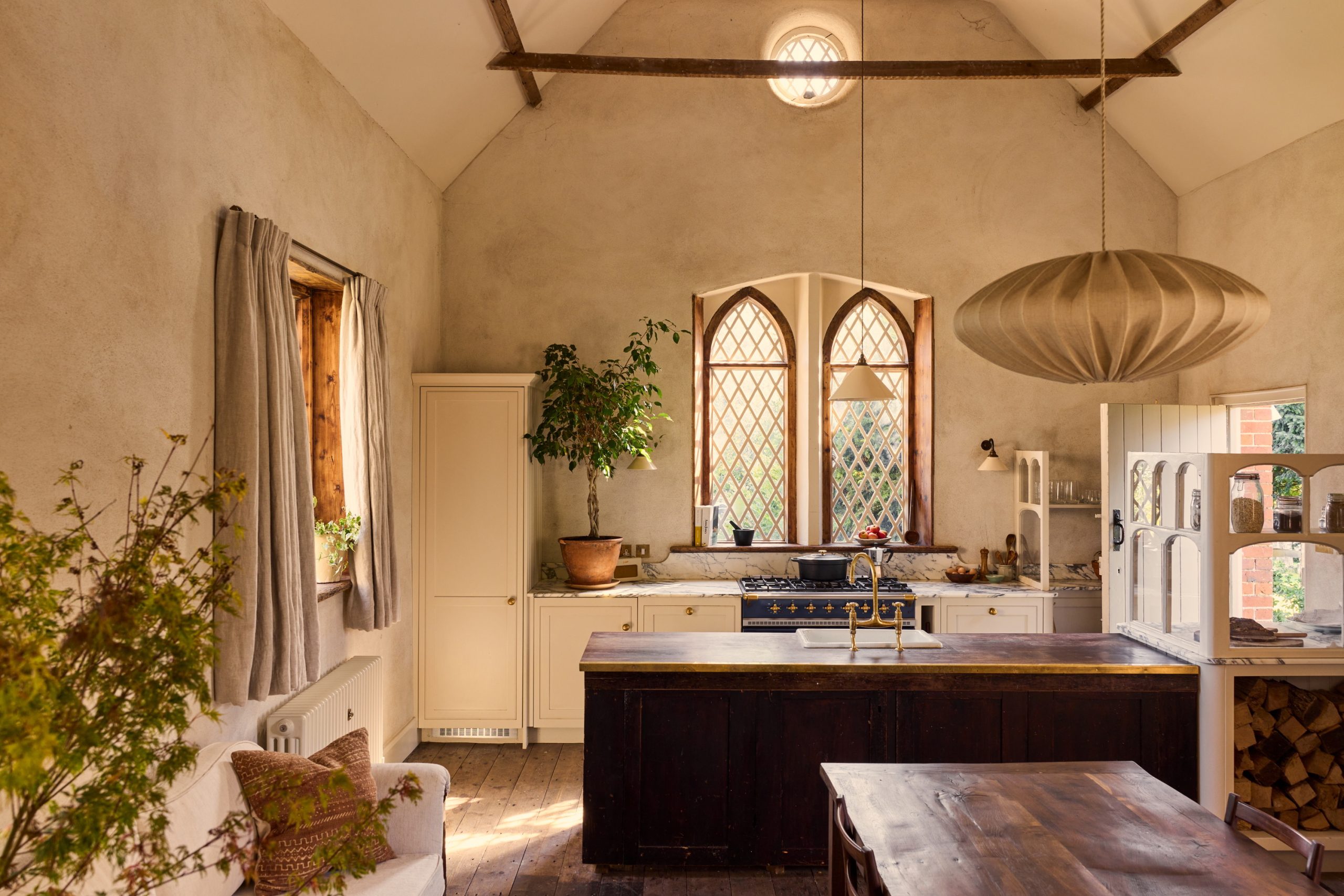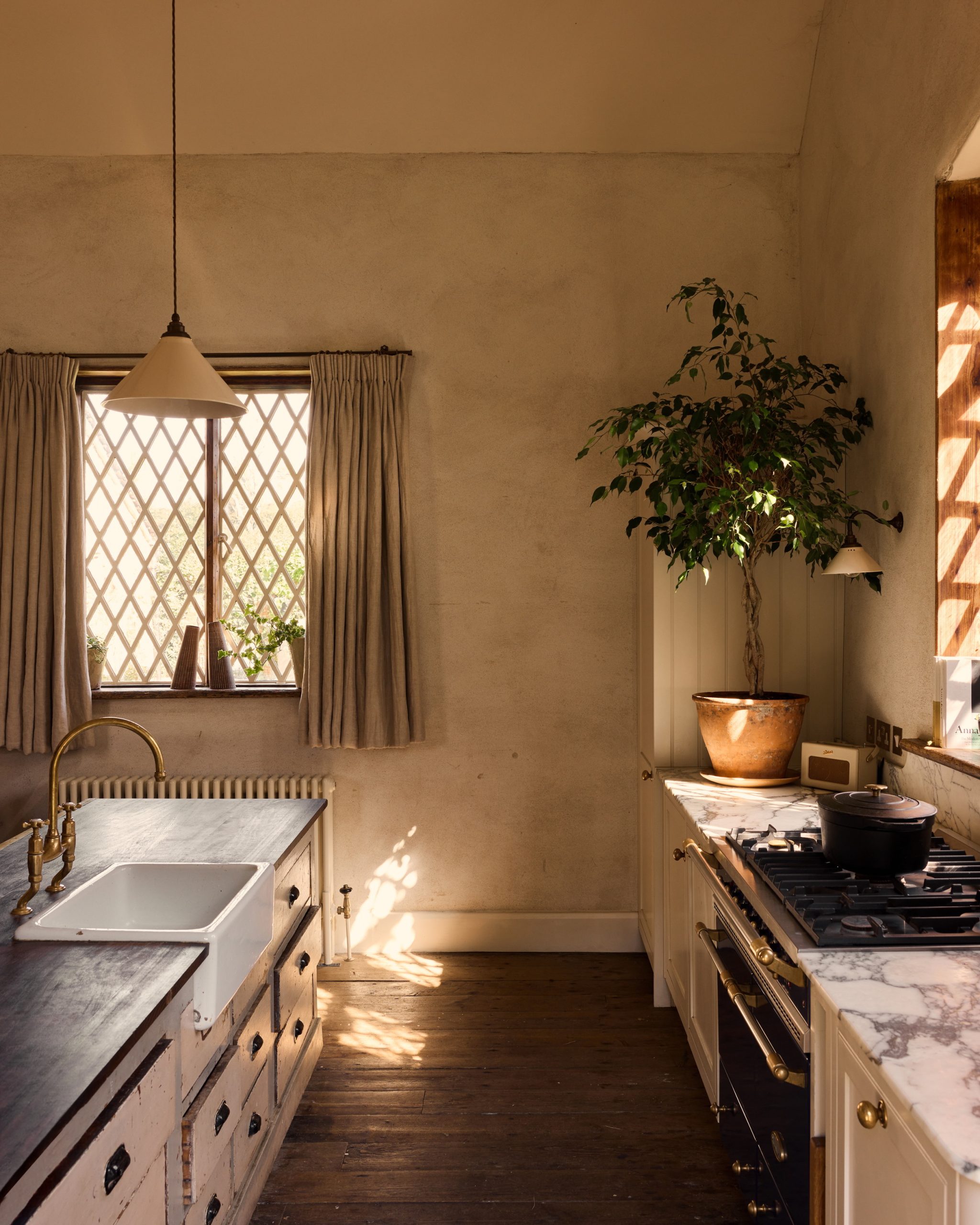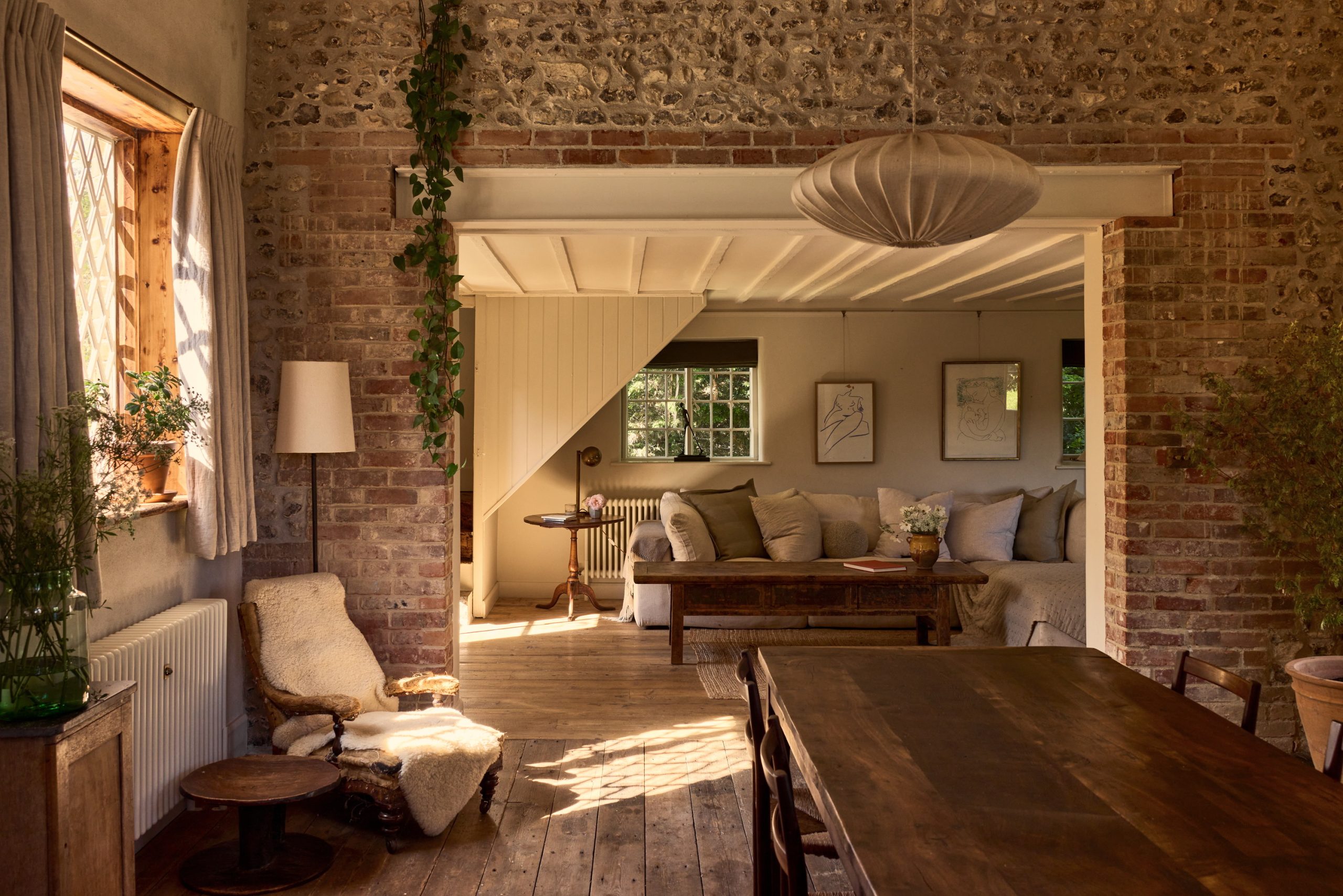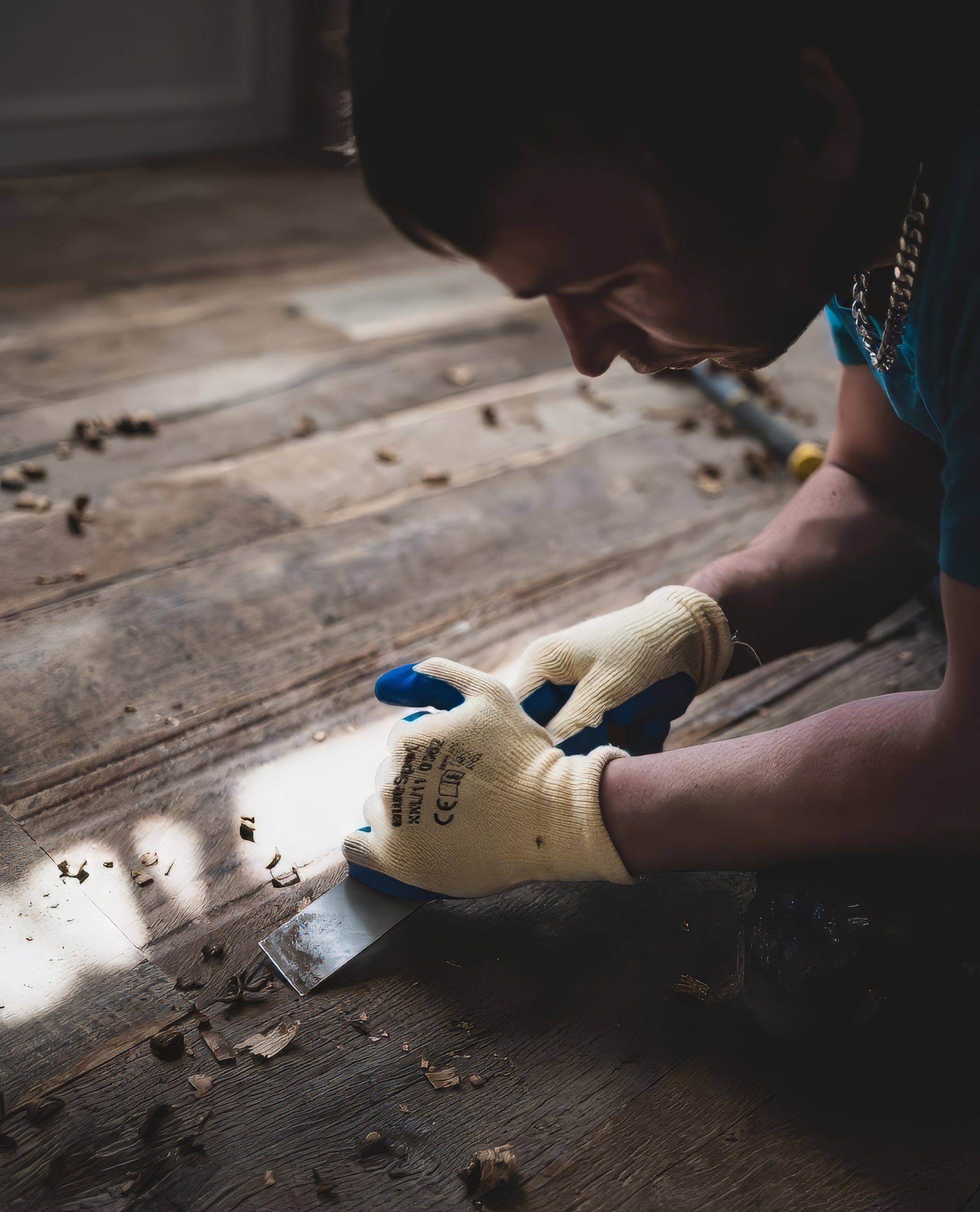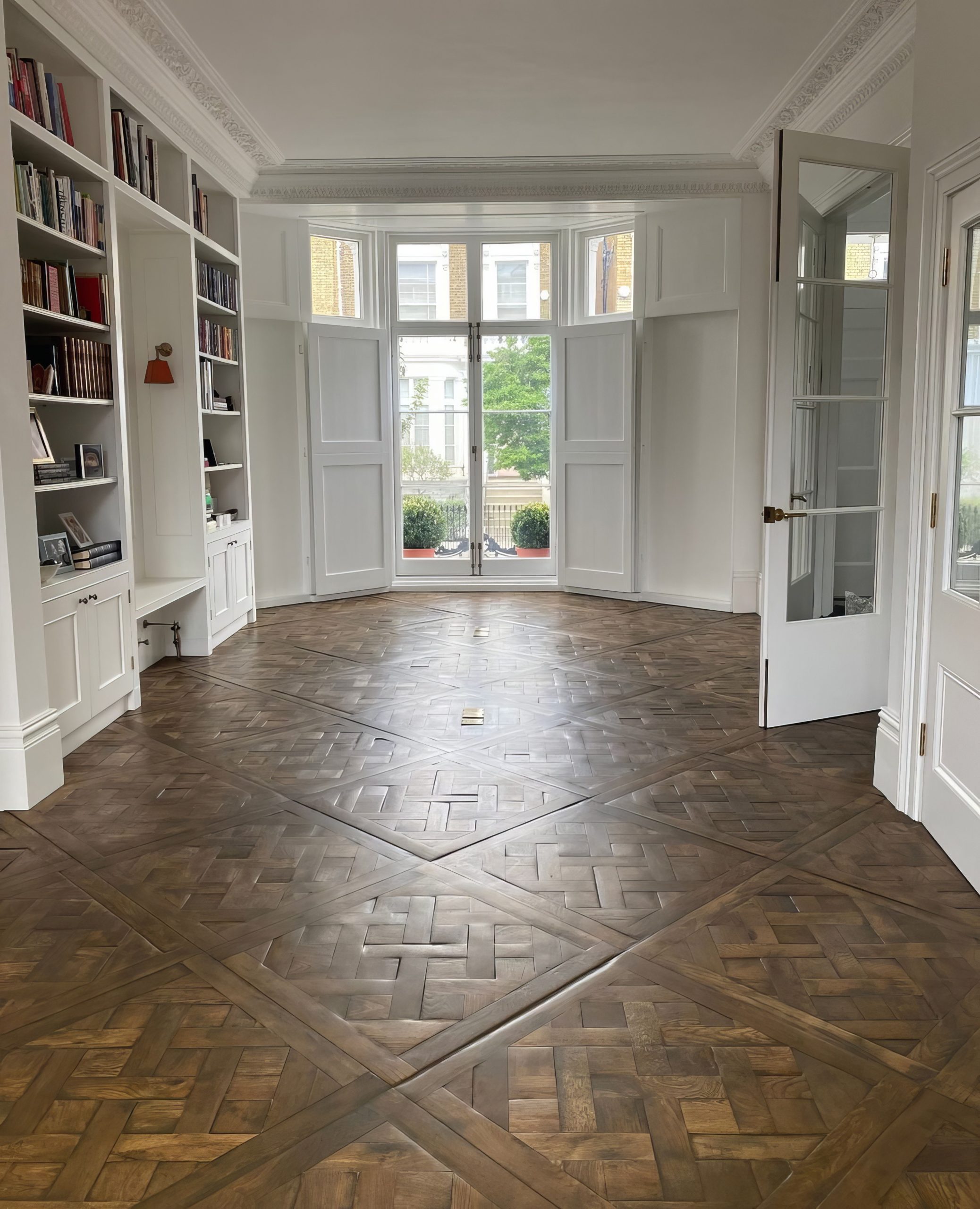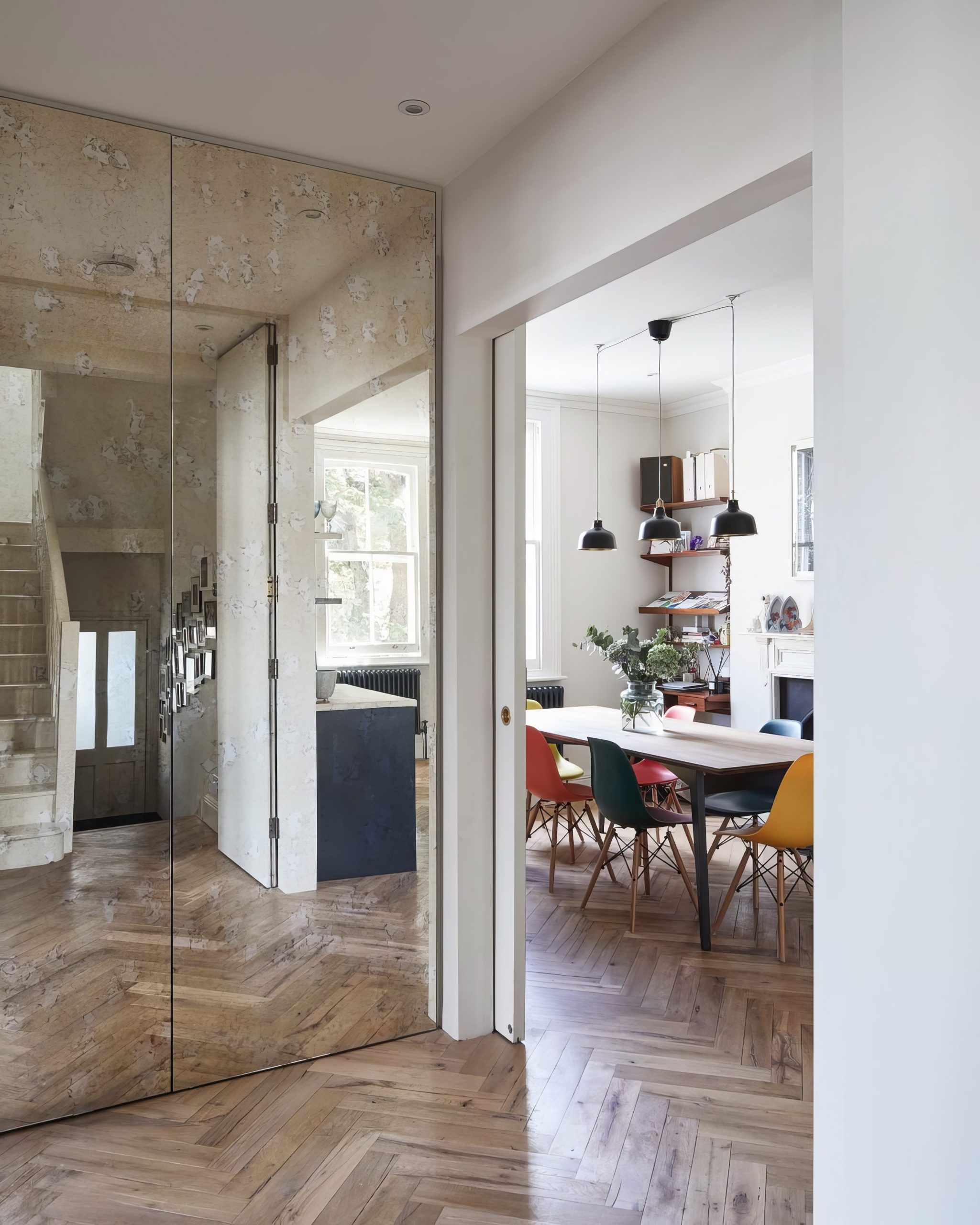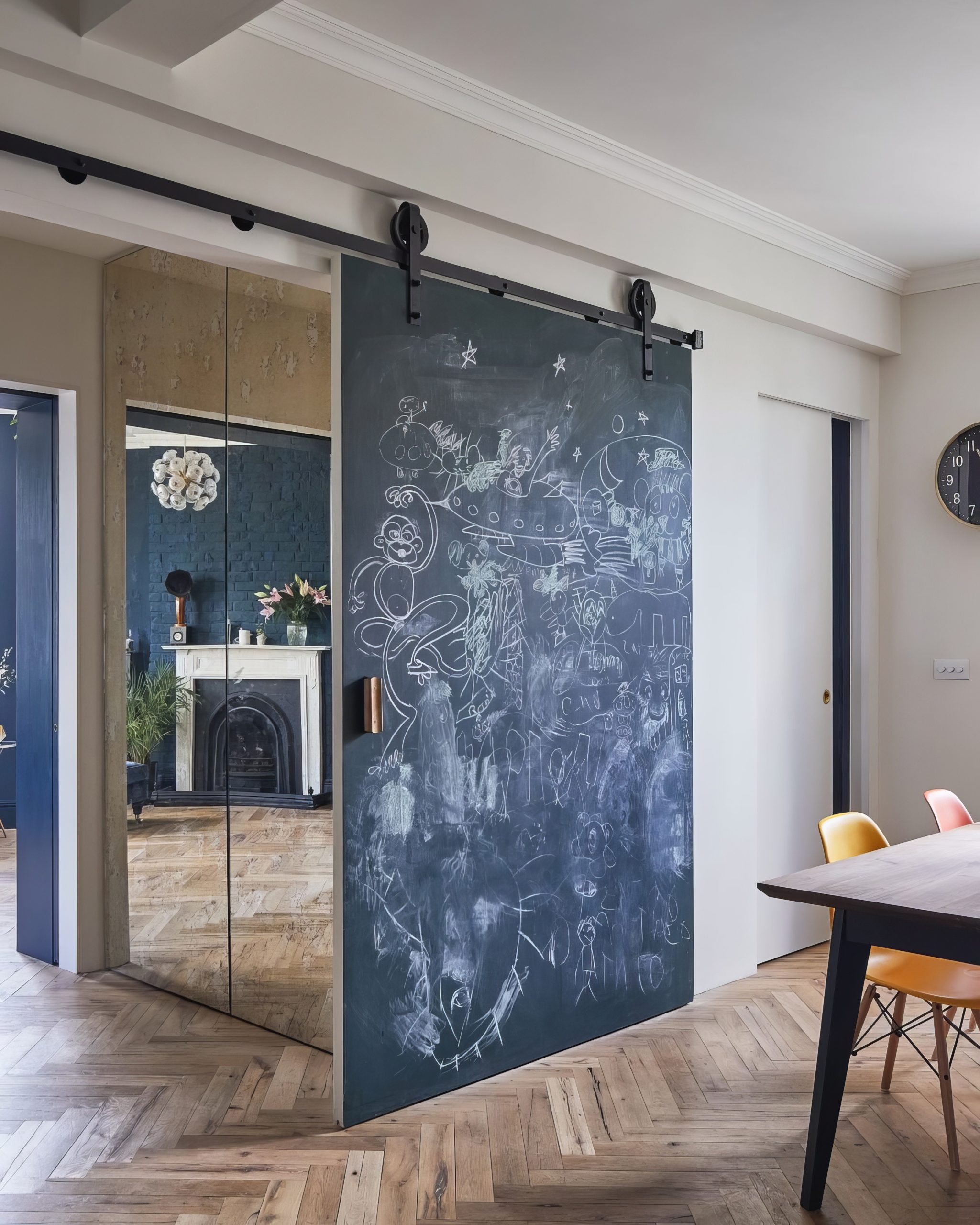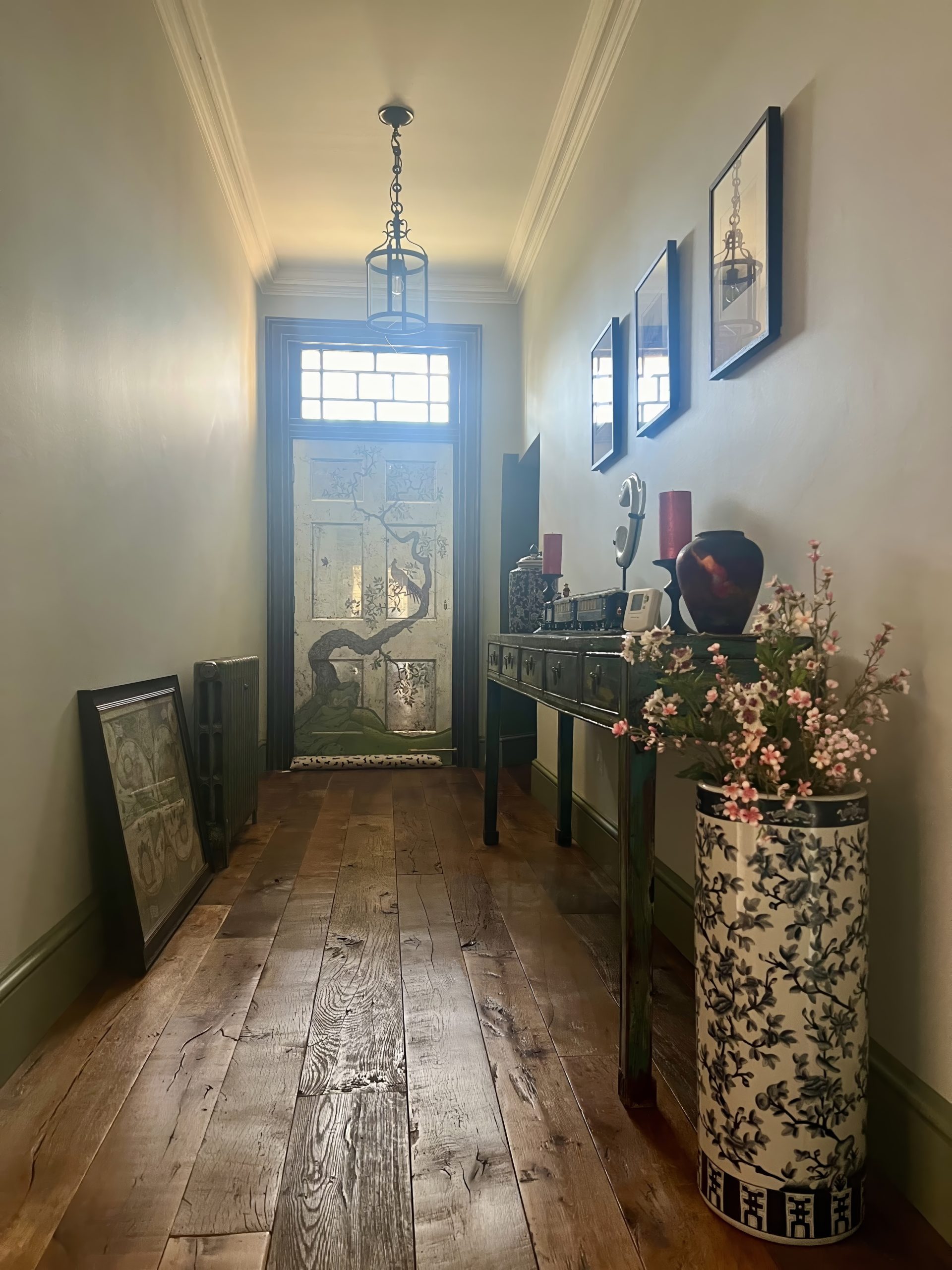
A Future Rooted in the Past
Reclaimed wood has emerged as more than a design trend in an age defined by environmental urgency.
It’s a tangible link between heritage and a sustainable future.
This timeless material, salvaged from old barns, factories, and even shipwrecks, is gaining fresh relevance in what some visionaries dub the coming Symbiocene era.
The Symbiocene is imagined as a new chapter of human history marked by harmony between people and nature, a deliberate departure from the exploitative patterns of the Anthropocene (our current epoch of human-driven ecological strain).
In this context, using reclaimed wood isn’t just an eco-friendly choice.
It symbolises the melding of past wisdom with future-forward thinking.
The result is a design ethos that champions ecology, aesthetics, and practicality in equal measure.
A New Vision of Harmony
To appreciate the significance of reclaimed wood in future design, it’s essential to understand the Symbiocene concept.
Coined by environmental philosopher Glenn Albrecht, the Symbiocene describes a “future state where humans are re-integrated with the rest of nature,” bringing human life into balance with all other life forms.[1]
This starkly contrasts with the Anthropocene, the current era of human dominance and environmental disruption, from climate change to mass extinctions.
The Anthropocene’s legacy has been one of despair and desolation, whereas “the Symbiocene represents its opposite,” a hopeful era of restoration.[2]
In Albrecht’s vision, nearly every aspect of our culture, economy, and technology would be “seamlessly re-integrated back into earthly symbiotic life”.
Envision the Symbiocene as the opposite of today’s unsustainable world.
It replaces toxic industries with biodegradable materials and renewable energy.
Rather than dominating nature, we become part of a “shared life” community with other species.
This isn’t regression but advancement, potentially one of humanity’s most rapid periods of positive innovation.
Architects, designers and engineers will be vital in crafting this harmonious future.
Reclaimed wood powerfully aligns with these Symbiocene principles. It is material taken from the remnants of past human structures and given a new life in the present.
By reusing wood rather than harvesting new timber, we honour the Symbiocene ethos of collaboration with nature (as opposed to domination) and participate in what scientists call a circular economy, where waste is minimised, and materials circulate through multiple lifecycles.
In the Symbiocene worldview, human progress doesn’t mean producing more from new resources. It means delivering better outcomes by regenerating and reusing what we already have.
And reclaimed wood embodies this philosophy.
Environmental Benefits of Reclaimed Wood
Choosing reclaimed wood is fundamentally an ecological choice.
Every salvaged timber saves a tree, directly preserving forests, and is a vital carbon sink in fighting climate change.
Reclaimed wood helps maintain intact forests by reducing the demand for fresh lumber while avoiding the energy consumption and emissions associated with logging and milling new wood.
A lifecycle analysis by the U.S. Forest Service found that producing new lumber can require 10 to 13 times more energy than producing reclaimed lumber, with a global warming impact roughly 3 to 5 times greater. [3]
In other words, reclaiming wood dramatically shrinks the carbon footprint of construction materials.
Not only does reclaimed wood save trees, but it also tackles the issue of waste. When buildings are demolished, usable wood often ends up as debris. In the UK, for example, millions of tonnes of timber waste are generated by construction and demolition each year. [4]
Much timber waste is incinerated or landfilled, releasing methane, a potent greenhouse gas. Reclaiming this wood prevents these emissions and reduces strain on waste facilities.
A Nature Communications study found that a circular approach to timber in the UK could deliver a 78% reduction in carbon emissions by 2050 compared to single-use models. Combined with new tree planting, this approach could avoid 258.8 million tonnes of CO₂ by mid-century, significantly contributing to net-zero targets. [5]
Wood stores carbon in its fibres. When burnt or left to rot, this carbon escapes into the atmosphere. We keep this carbon locked away for decades by reclaiming timber for buildings or furniture.
Thus, reclaimed wood is a carbon repository that replaces high-carbon materials like steel or concrete, a dual climate benefit.
No wonder it’s called “one of the greenest building materials” available.
Using reclaimed wood supports local recycling economies. Salvaged timber typically comes from nearby sources, reducing transport emissions and strengthening community businesses such as salvage yards and woodworking studios.
This approach embodies the Symbiocene principle of prioritising local resources for local needs, allowing communities to build with what they already have rather than relying on environmentally costly global supply chains.
Examples from the UK and Beyond
To see how these ideas translate into practice, we can look at some real-world examples of reclaimed wood projects and businesses leading the way:
Community Wood Recycling (UK): In cities across the UK, community enterprises collect timber waste and make it available for reuse. For instance, the Brighton & Hove Wood Recycling Project and similar groups in Bristol, Glasgow, and London salvage wood from construction skips and demolition sites. They then sell this lumber to the public at affordable prices or turn it into products. These projects reduce landfill waste and create jobs and volunteer opportunities, illustrating the social benefits of a circular wood economy.
Retrouvius (London, UK): This design firm and salvage warehouse has become iconic for stylish interiors made from reclaimed materials. Co-founder Maria Speake has designed kitchens and entire homes, restaurants, and shops using reclaimed wood for flooring, panelling, and bespoke furniture. A notable project involved sourcing timber from the Victoria & Albert Museum’s old displays and laboratory countertops from a school, transforming them into a chic modern kitchen. [5] Retrouvius’ work proves that reuse can achieve high-end design outcomes. Their showroom also sells planks and beams recovered from historic buildings, giving architects and homeowners access to rare woods (like old-growth iroko or Victorian pine) with rich backstories.
Kaltimber (Bali, Indonesia): On the other side of the world, this social enterprise is tackling deforestation by exclusively using reclaimed wood for tropical hardwood products. In Indonesia, Kaltimber salvages teak, ironwood, and other hardwoods from derelict structures such as abandoned houses, old warehouses, and boats. By doing so, “no trees are cut down for [their] products,” and customers get sustainable decking, flooring, and furniture made of premium wood that has already proven its durability. [6] Businesses like this demonstrate a scalable model of marrying environmental protection with local craftsmanship and global commerce.
Adaptive Reuse Architecture: Many contemporary architectural projects creatively incorporate reclaimed wood. In the United States, for example, the Bullitt Centre in Seattle – often cited as one of the greenest commercial buildings – used salvaged wood from an old military building for parts of its structure, meeting strict sustainability criteria. In Australia, architects have used recycled timber railroad ties in university buildings to showcase reuse in structural forms.
Furniture Makers and Artisans: Countless small businesses are now centred around reclaimed wood furniture. For example, Ezekiel & Stearns in the US craft farmhouse-style tables from salvaged barn wood, each piece highlighting the weathered texture of the source material. In Poland, Wooden Story creates children’s toys from reclaimed hardwood offcuts, proving that even scraps can become beautiful and valuable.
Each example above, whether a big architectural showcase or a humble workshop product, contributes to normalising the use of reclaimed wood.
They also highlight the international scope of this movement.
While methods and materials differ by region (teak in Asia, oak and pine in Europe, etc.), the underlying principle is shared: give new life to old wood, reduce harm and add value.
Importantly, these projects and businesses often engage and educate the public. When people walk on a floor made of wood that was once a railroad bridge or dine at a table made from a 200-year-old beam, they experience the concept of sustainability woven into their daily lives.
It’s inspirational and practical simultaneously, and precisely what is needed to shift mindsets toward a Symbiocene future.
Conclusion:
Reclaimed wood is much more than a design choice. It is a statement about the future we want to build. In the Symbiocene vision of tomorrow, humans will create in ways that enhance our connection to nature rather than sever it.
Reusing wood from past structures powerfully embodies that ethos. It means valuing what we already have, learning from the ingenuity of earlier builders, and respecting the natural origin of materials.
Every reclaimed board is a small act of reconciliation with the environment, saying that progress can be gentle and regenerative.
This movement marries ecological responsibility with artistic expression and practical utility. The wood that once supported life in an old building can support life again in a new form, a continuous cycle much like nature’s own.
For sustainability advocates, architects, and furniture makers, working with reclaimed wood offers a path to innovate while staying grounded in authenticity.
It proves that modern solutions to climate change and resource scarcity can be deeply enriched by wisdom from the past, including the age-old practices of reuse and craftsmanship.
In British carpentry traditions, there’s a saying that “old wood best to burn, old wine to drink, old friends to trust”.
We might add old wood; it’s best to build anew.
As we enter a future where harmony with nature is paramount, reclaimed wood provides a tangible, beautiful means.
It connects our built environment to the rhythms of renewal and reminds us that the way forward can indeed be rooted in the past, with creativity, conscience, and confidence.
References (APA):
Albrecht, G. (2019, February 27). After the Anthropocene. The Ecologist. Retrieved from https://theecologist.org/2019/feb/27/after-anthropocene
Beabout, L. (2023, November 28). Sustainable Material Spotlight: Reclaimed Wood. REALTOR® Magazine. Retrieved from https://www.nar.realtor/magazine/real-estate-news/home-and-design/sustainable-material-spotlight-reclaimed-wood
Bergman, R. D., Gu, H., Falk, R. H., & Napier, T. R. (2010). Using reclaimed lumber and wood flooring in construction: Measuring environmental impact using lifecycle inventory analysis. In Proceedings of the International Convention of Society of Wood Science and Technology (Paper WS-11, 11 p.). Geneva, Switzerland: UNECE Timber Committee.
Buckley, M. (2024, September 10). Why is the new Symbiocene the place to be? Innovators Magazine. Retrieved from https://www.innovatorsmag.com/why-the-new-symbiocene-is-the-place-to-be/
Cousins, S. (2024, July 26). The structural timber prototype uses 100% waste from demolition. RIBA Journal. Retrieved from https://www.ribaj.com/products/structural-timber-prototype-uses-waste-from-demolition-ucl-circular-economy
Forster, E. J., Healey, J. R., Newman, G., & Styles, D. (2023). Circular wood use can accelerate global decarbonisation but requires cross-sectoral coordination. Nature Communications, 14(6766). https://doi.org/10.1038/s41467-023-42499-6
Kaltimber (2024, October 7). How Reclaimed Wood Helps Reduce CO2 Emissions [Blog post]. Retrieved from https://www.kaltimber.com/blog/how-reclaimed-wood-helps-reduce-co2-emissions
Senior, E. (2020, June 15). An entirely reclaimed kitchen by Retrouvius. House & Garden. Retrieved from https://www.houseandgarden.co.uk/article/kitchen-case-study-retrouvius
Speake, M., & Retrouvius. (n.d.). Retrouvius Design Portfolio [Website]. Retrieved from https://www.retrouvius.com (for project descriptions involving reclaimed wood)
Vrijsen, L. (2022, November 6). Reclaimed wood assembles HOYT architecten’s barn house in Waterland. designboom. Retrieved from https://www.designboom.com/architecture/reclaimed-wood-hoyt-architecten-barn-house-waterland-11-06-2022/


